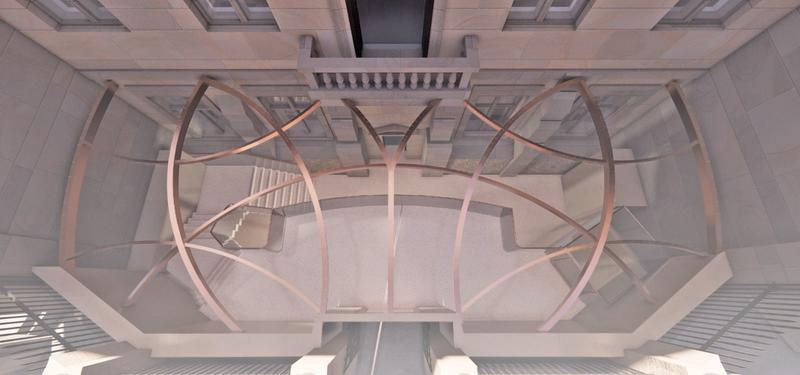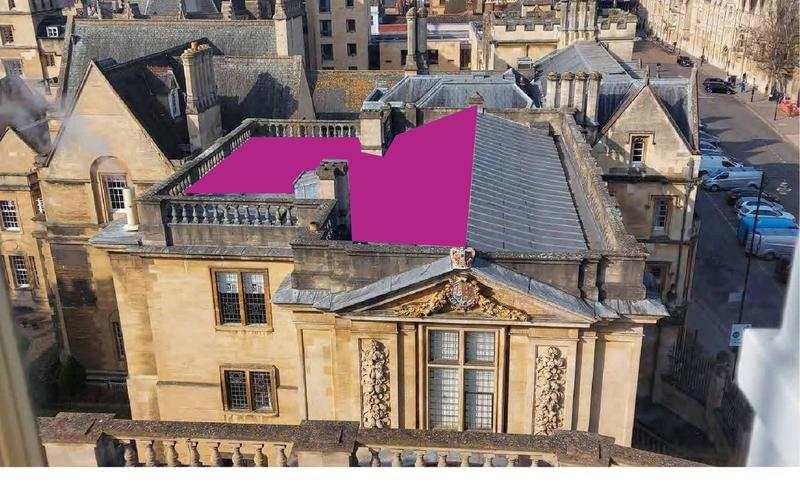Vision24
Situated in the heart of Oxford, our beautiful home is the oldest public museum building in the world.
But after three and a half centuries, the lack of level access and facilities for visitors, researchers and staff, combined with the crumbling fabric, represent a serious threat to its survival as a museum.
That is why we are on a transformational journey to preserve our building’s heritage and safeguard its future.
Our Vision24 project is all about making your Museum fully accessible and inclusive for generations to come, so everyone can enjoy the building and connect with the histories and stories.
Oxford City Council is currently considering our request for planning permission and we'd love to know your thoughts on our future vision.
Or get in touch with us at v24@hsm.ox.ac.uk.
An early "fly-though" showing the Welcome area, the lift and a balcony view onto Broad Street
https://www.youtube.com/embed/tAkBQ035Fsw?list=PLMOMiQ79Qj6I1HRrhfdZnTe5RqQ6Z853l
Opened in 1683, our Museum building was designed as a home for ‘natural philosophy’ — what we now call science.
Our refurbishment proposals respect the building’s rich heritage at the heart of historic Oxford while unlocking its potential to keep thriving for generations to come.

Artist's impression of the new Welcome space, showing an astrolabe-inspired glass roof
One of the biggest challenges for our Vision24 project is access to and around the Museum, which at the moment is exclusively through steps and staircases.
This means many who would like to visit are unable to do so.
That is why our proposals prioritise physical, intellectual and emotional access to the Museum.
They include a stylish new front extension and Welcome space with level access and significantly improved visitor facilities.
Dr Silke Ackermann, Director of the History of Science Museum, says:
Achieving Listed Building Consent and Planning Permission ... is a dream come true for me personally, and potentially a blueprint for other Grade I listed heritage sites.
Our beautiful historic building is our prize exhibit.
We are proposing to transform the Basement, Central and Upper Galleries to offer an immersive, flexible visitor experience on every floor.
These new galleries will be ‘living and working’ spaces. In addition to hosting creative stories, innovative exhibits and engaging events for Museum visitors, they will also be adaptable for learning, teaching and research, and engaging with the collections.
Our world-famous collection of astrolabes (sophisticated medieval computing devices) has inspired the design for a glazed roof over a new Welcome space.

Astrolabe-inspired draft design for the Welcome space lightwell
It is a fascinatingly elegant way to show the inspiring power of science and the importance of this building in the history of science in Oxford — and across the globe.
Dr Silke Ackermann, Director of the History of Science Museum, says:
Achieving Listed Building Consent and Planning Permission ... is a dream come true for me personally, and potentially a blueprint for other Grade I listed heritage sites.
From the outset, environmentally sustainable solutions have been at the heart of our thinking.
In addition to exploring discreet photovoltaic panels on the roof, we are also taking a ‘fabric first’ approach to improving environmental controls in the building.

Photovoltaic panels considered for the south-facing area of the roof
This is important both for people (our visitors, researchers, students and staff) and for the collections: at the moment, temperatures can reach above 30°C in summer and below 13°C in winter.
That is why our proposals explore how to improve this historic building’s energy performance through measures like roof insulation, secondary glazing and door lobbies.
Dr Silke Ackermann, Director of the History of Science Museum, says:
Achieving Listed Building Consent and Planning Permission ... is a dream come true for me personally, and potentially a blueprint for other Grade I listed heritage sites.
Support the future of your Museum
The stories at the heart of our collections show that our world’s many histories of science are the histories of all of us.
What better reason to spend time with us in the Museum? We hope you will visit us either in the Museum in Oxford or in the digital Museum.
Your support is invaluable in helping us safeguard the History of Science Museum’s future here in the world’s oldest public museum building.
Thank you.







